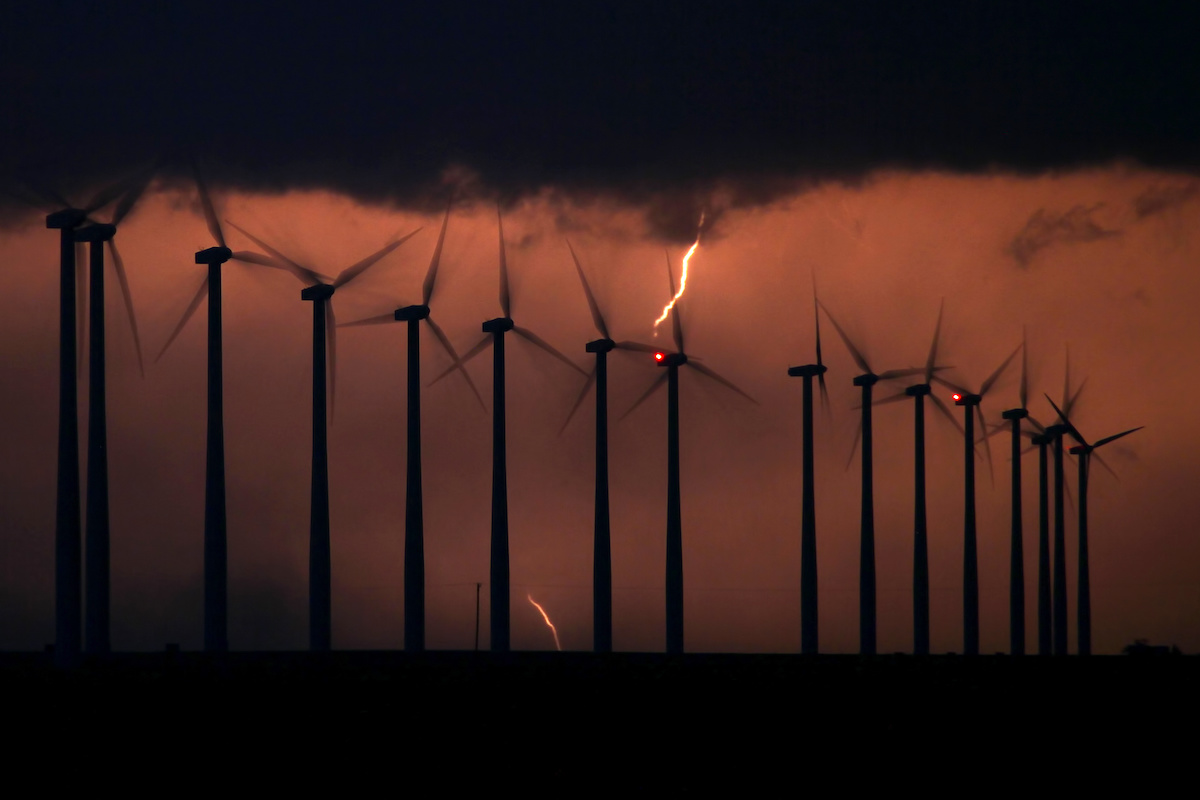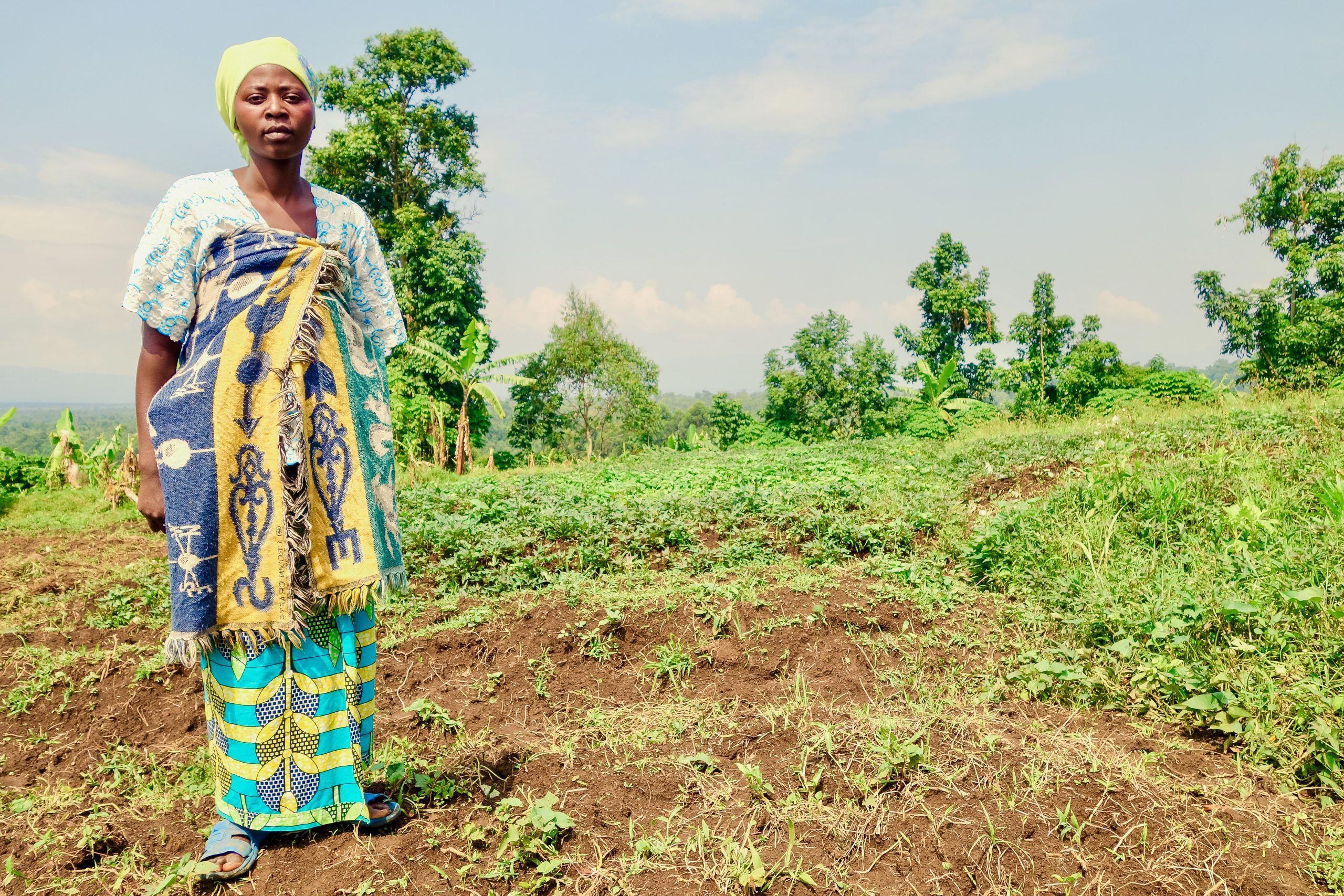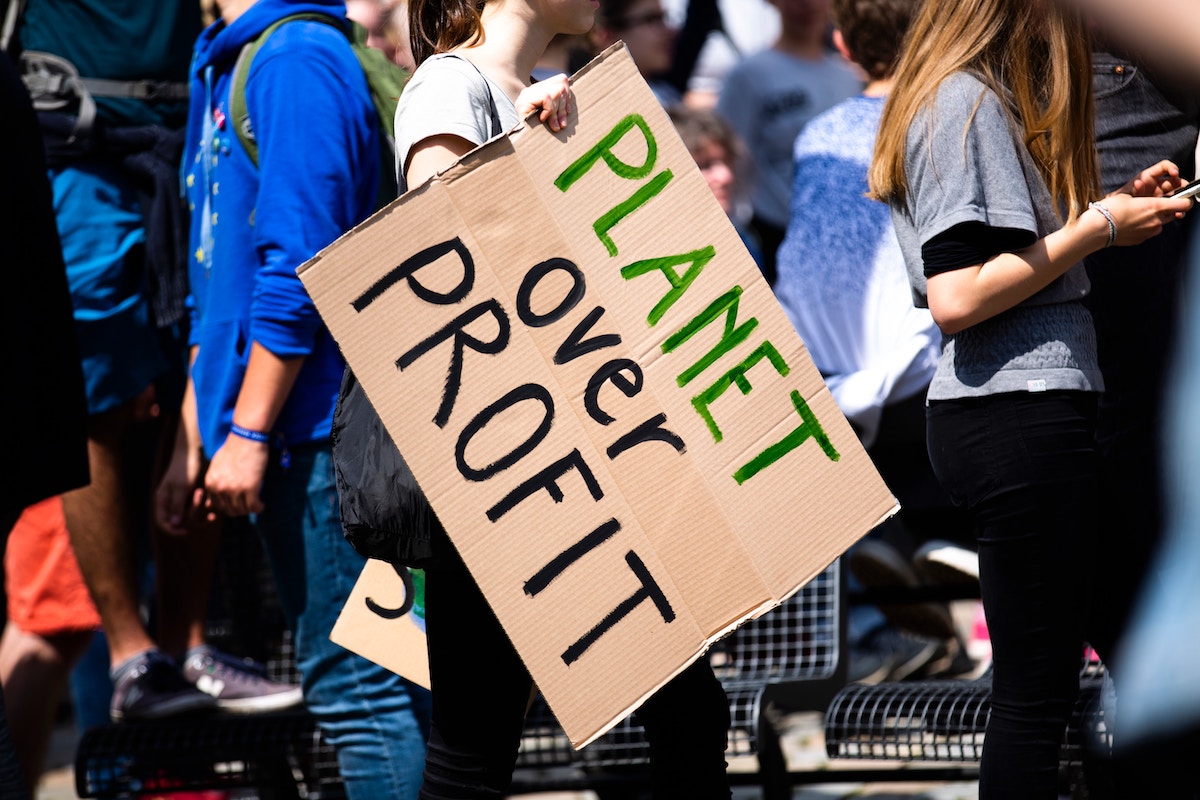Environment
Climate Change—Assessing the Worst Case Scenario
The activist group Extinction Rebellion is telling us that climate change represents “an unprecedented global emergency” and is calling for radical measures to deal with it.

Does a thinking person today have a chance of figuring out what to think about climate change? On the one hand, we are told there is a scientific consensus that humans are changing the climate. On the other hand, the most pessimistic future scenarios strain our credulity. The most extreme example may be the retired professor who believes that we will all be dead by 2026.
The activist group Extinction Rebellion is telling us that climate change represents “an unprecedented global emergency” and is calling for radical measures to deal with it. Such claims seem to be gaining ground and appearing with increasing frequency in the media. And according to a recent poll, nearly half of Americans believe climate change will result in the end of the world within the next 200 years.
Even among the more optimistic, many find it prudent to consider the worst case, but have very little information to help them decide where to draw the line between farsightedness and fantasy. And I understand those who assume that even though some claims may be exaggerated, surely with so much smoke, there must be a fire somewhere. A headline like “UN Says Climate Genocide Is Coming. It’s Actually Worse Than That,” implies that even discounting the exaggeration, it’s still “climate genocide.”
At the extreme, worst-case or precautionary thinking is analogous to Pascal’s wager and subject to similar objections. If we should pull out all the stops to prevent climate catastrophe no matter how improbable it might be, why not some other, equally improbable disaster? As long we have finite resources to devote to preventing disasters and a virtually unlimited ability to imagine them, this creates impossible dilemmas. Fortunately, there has been some realistic exploration of worst cases among climate scientists and others recently. They can supplement the IPCC reports which, though far from perfect, have the advantage (at their best) of summarizing the available evidence, avoiding the “single study syndrome.”
Alarmist claims come in two flavors: one vague and ambiguous, the other exaggerated and misleading. The vague kind conjures up an ominous sense of dread, just as monsters in horror movies can seem scariest before they actually appear. From a seemingly sober analysis at CNN:
But the scale of the outrage [about climate change] in no way matches the magnitude of this disaster, which, like WWII, threatens to cripple or even obliterate human life on the planet as we know it.
What does this even mean? Did WWII “cripple” or even “obliterate” human life in general? It was catastrophic and horrific, of course—much had to be rebuilt afterwards, and many were still suffering, but was human life overall fundamentally and irrevocably worse after the war ended? On a superficial reading, this passage could easily be understood as “climate change will kill us all,” whether or not that was the intended message.
Furthermore, just about any negative prediction can be amplified by imagining that it will cause “social breakdown” and trigger conflict, even war. This has long been common among environmental alarmists. Paul Ehrlich’s 1968 predictions were particularly grim, even suggesting global nuclear war. Few actual climate scientists would go to that level of doomsaying. But the tendency to fantasize about societal impacts is evident. One recent study suggests that sea level may (in the worst case) rise up to 2 meters by 2100:
Such big sea level rises so soon would lead to nightmarish impacts, says Jonathan Bamber of the University of Bristol. “If we see something like that in the next 80 years we are looking at social breakdown on scales that are pretty unimaginable.”
Around 1.79 million square kilometres of land could be lost and up to 187 million people displaced.
(In Judith Curry’s explicit worst-case investigation of sea level, she finds that sea level rise between 1.6 and 2.5 meters is “borderline impossible,” making her plausible worst-case estimate similar but somewhat lower.)
Up to 187 million people displaced certainly seems bad enough. But some have pushed this even further: A “very senior member” (scientist? bureaucrat?) of the IPCC is supposed to have claimed that exposed populations in low-lying nations “will die.” Bjørn Lomborg’s dissection of this claim is instructive. First, he points out that they will not stay and drown. This is so self-evident that you may wonder how both the “very senior member” and the scientist quoting him can believe they will. Nor is it even likely that they will have to move. Lomborg points out that the study in question concludes that adaptation is feasible and that the actual number of displaced individuals will be far lower (around 300,000 or less).
Still, let us for a moment indulge the notion that all those people will have to move in the 80 years left until 2100. Will it cause “social breakdown on scales that are pretty unimaginable”? Looking back at the past 80 years, we can see that at least 150 million people were permanently displaced. So although 187 million certainly represents enormous disruption, it is hardly unimaginable, having basically happened before.
One currently fashionable worst-case scenario is from a recent scientific publication discussing a “Hothouse Earth” scenario. Climate scientist Richard Betts points out that much of the coverage of this study has exaggerated the alarm:
With some exceptions, much of the highest-profile coverage of the essay presents the scenario as definite and imminent. The impression is given that 2°C is a definite “point of no return,” and that beyond that the “hothouse” scenario will rapidly arrive. Many articles ignore the caveats that the 2°C threshold is extremely uncertain, and that even if it were correct, the extreme conditions would not occur for centuries or millennia.
But what is a hothouse state, and what would that actually be like? An article by a group of paleobiologists explores this:
A true Hothouse Earth emerged when carbon dioxide levels reached something like 800ppm—about double those of today. This was the world of the dinosaurs, 100m years ago. There was little or no ice on Earth and the polar regions had forests and dinosaurs which were adapted to living half the year in darkness.
The biosphere thrived, though equatorial regions tested the thermal limits of life…Even this type of Earth is not so unpleasant, though—once you’re there.
This attention to the distant future shows that the question “what is the worst case?”—unless it’s purely academic—has to come with a time frame. We cannot even begin to imagine what technology and society will be like thousands of years from now. In fact, do we even have knowledge that could enable us to help our descendants much past 2100? Similarly, should—or even could—our ancestors have done anything to prevent today’s problems? Michael Crichton explored this question in 2003:
Let’s think back to people in 1900 in, say, New York. If they worried about people in 2000, what would they worry about? Probably: Where would people get enough horses? And what would they do about all the horseshit? Horse pollution was bad in 1900, think how much worse it would be a century later, with so many more people riding horses?
The idea that it is meaningful to plan for the future beyond a few decades has gradually come to seem normal, but has there ever been any serious discussion of its validity? The closest thing we have to a rational empirical approach to it—looking at historical experience—hardly supports it. But since this is an exploration of worst cases, let us assume that we need to consider the rest of this century at least.
That brings us to the other currently popular worst-case narrative. It is based on the IPCC’s scenario known as RCP 8.5. RCP stands for Representative Concentration Pathway. It is a hypothetical scenario for the future growth of CO2 in the atmosphere during this century. There seems to be some consensus that RCP 8.5 is not a “business as usual” scenario in the sense of something that is likely to happen in the absence of climate policy. But it is often misconstrued as such.
RCP 8.5 assumes a departure from multiple current trends. It appears to require a “return to coal,” which is contrary to forecasts, and even more contrary to the most recent trends. According to a recent IEA report, investment in coal is down 75 percent in three years. In fact, recent research indicates that RCP 8.5 probably cannot happen given existing reserves of coal: “Global coal reserve data are of poor quality, but seem to be biased towards the high side.” Judith Curry has analyzed RCP 8.5 in more detail from a worst-case standpoint, and has concluded that this too is “borderline impossible.” The next highest scenario, RCP 6.0, may be more relevant and useful.

Much alarmist material is premised on the idea that climate change has already caused all sorts of extreme weather hazards to grow significantly. By extrapolation into the future, this feeds apocalyptic visions of weather gone berserk. But contrary to what the media tend to report, this notion has very little empirical support. Roger Pielke Jr has treated this subject in detail in his book The Rightful Place of Science: Disasters & Climate Change:
The analysis of twenty-two disaster loss studies shows that economic losses from various weather-related natural hazards, such as storms, tropical cyclones, floods, and small-scale weather events such as wildfires and hailstorms, have increased around the globe. The studies show no trends in losses, corrected for changes (increases) in population and capital at risk, that could be attributed to anthropogenic climate change.
Pielke summarizes the IPCC’s conclusions here.
Apart from this, much of alarmist thinking can be described as reducing the future to climate: reasoning as if nothing else will happen except climate change, thus discounting economic growth, technological development and adaptation to changing environmental conditions. If we also ignore the fact that climate change will also have beneficial effects, there is no way the future could be anything but worse than the present. By contrast, the IPCC expects the current trends of economic growth and falling mortality to continue. In fact, the negative economic impacts of climate change are expected to be small compared to overall economic growth.
But what about the actual, specific consequences of climate change? Before we even begin to consider what is the worst case for a specific impact, we should determine whether the problem is even likely to get worse than it is today. For some, such as death toll from weather-related disasters or malaria, the effect of adaptation and improvement in living conditions is likely to far outweigh any adverse effects of climate change. A brief look at the most commonly discussed impacts.
Climate Refugees: Activists, journalists and NGOs keep telling us that human-caused climate change will cause tens or hundreds of millions of humans to have to flee their homes. This may have originated with a figure of 200 million “environmental refugees,” suggested by Norman Myers in 2005. It was cited in official reports for a few years after that, but seems to be absent from around 2009, having been deemed “apocalyptic and based on no more than anecdotal evidence and intuitive judgement.”
Sometimes figures about persons displaced by weather events are used, but these include those temporary displaced, such as evacuees from hurricanes. A 2018 report from the World Bank attempts to estimate the number of internal refugees by adding estimates for different regions. The problem with this is that local and regional climate is subject to sometimes large natural variations unrelated to global climate change.
A 2013 Guardian article explained the complexities of the current understanding of the issue and is consistent with points made in the IPCC AR5 (WGII sections 9.3 and 12.4):
The phrase [climate refugees] conjures images of large numbers of people moving en masse over long distances and crossing international borders and possibly continents. It seems unlikely that climate change will produce this kind of human movement.
Or as the IPCC puts it: “There is low confidence in quantitative projections of changes in mobility, due to its complex, multi-causal nature.”
Drought and Flood: Apart from sea level, the alarmist narrative about refugees tends to presuppose that people will be permanently displaced as a result of hunger and poverty following crop failures caused by drought or flood. Although there are no clear global trends so far in either drought or flood, the IPCC does expect dry areas to become drier and wet areas to become wetter (DGDWGW: “dry gets drier, wet gets wetter”). The evidence so far suggests that there may be something to this, but that the effect is not pronounced:
Only 15.12 percent of the land areas have followed the DGDWGW paradigm, whereas 7.77 percent have experienced the opposite trend.
Weather-Related Natural Disasters: The main concern is likely to be adaptation by reducing vulnerability to such events, including hurricanes. This depends chiefly on economic development and is likely to swamp any expected adverse effects due to climate change.
Heatwaves: These may be the most obvious consequence of global warming, and one for which there is actual evidence of a rising trend. But currently, 17 times more people die of cold than heat. The pattern is similar even in a relatively hot country like India. And there is evidence that people are good at adapting to heat.
Disease: Malaria is currently one of the biggest global problems, killing hundreds of thousands of people each year, but there is little indication that climate change is a crucial or even an important factor. Malaria used to be endemic in temperate regions in earlier times, even during the Little Ice Age, but was eliminated despite the fact that we have already had 1 degree C of global warming. Vaccines are currently being developed and tested for both malaria and dengue. The idea that the current efforts to eradicate these diseases will end in total failure seems impossibly pessimistic.

Biodiversity and Species Extinctions: This is another well-known concern, but it is difficult to assess because the relevant scientific reports are not very helpful. I am unimpressed by the recent UN IPBES report. The report’s estimate that one million species will soon be extinct seems wildly implausible. Above all, the most relevant question seems to be ignored: Have extinctions increased during the era of global warming starting around 1900? Statistics per decade suggest the opposite may be true. And even if we take the IPBES claims at face value, it is clear from the report that the main issue is land use and habitat loss or degradation, having little to do with climate change.
Ocean Acidification (OA): Sometimes called the “evil twin” of climate change, ocean acidification is considered a cause for concern owing to its potential impacts on living organisms in the ocean. However, it is not expected to have apocalyptic effects such as mass extinctions or societal collapse. The IPCC ocean and cryosphere report (section 5.4.2.3.1) is optimistic about the ability of fisheries to adapt in the case of RCP 6.0. The IPCC AR5 suggests a higher likelihood of a positive outcome for 14 out of 18 marine taxa for RCP 6.0 (the second highest RCP) compared to RCP 8.5 (table 6.3). None of the assessments for RCP 6.0 are listed as having high confidence.
I am not by any means claiming that my analysis is the definitive or final word. Important information is still missing, all of it is debatable to some extent, and new research may turn up surprising results. But, for the time being, I see no justification for describing climate change in terms of “crisis,” “emergency,” “catastrophe,” or “existential threat” rather than simply “threat,” “challenge,” or “problem.” At the very least, anyone claiming that millions of people are going to die, or that civilization will collapse, should be required to specify which impacts of climate change are going to cause this and how.






